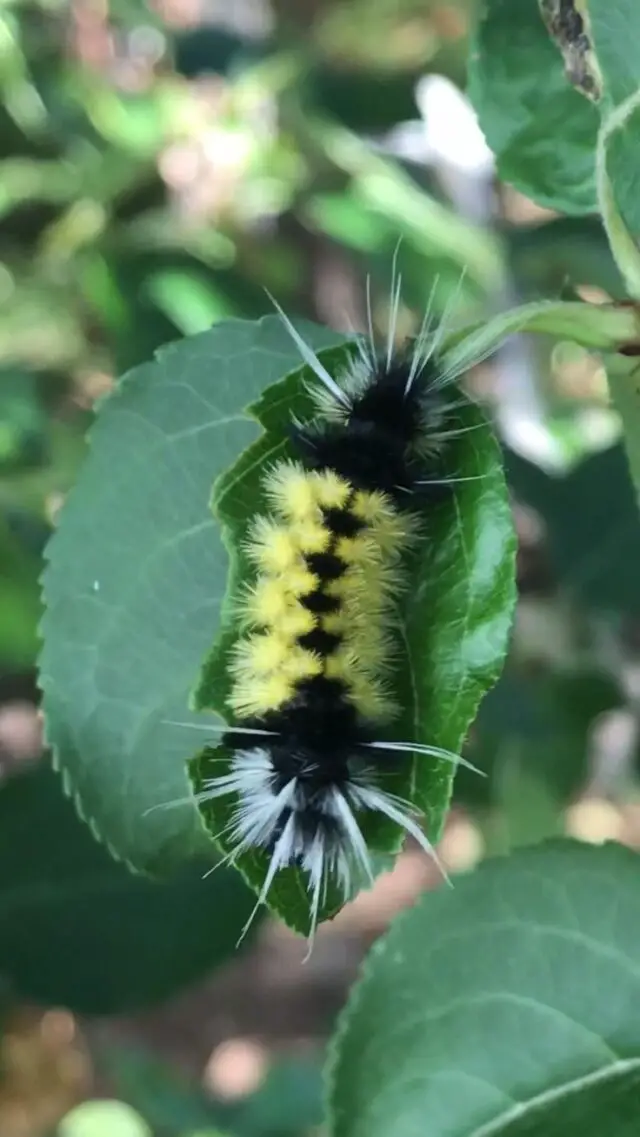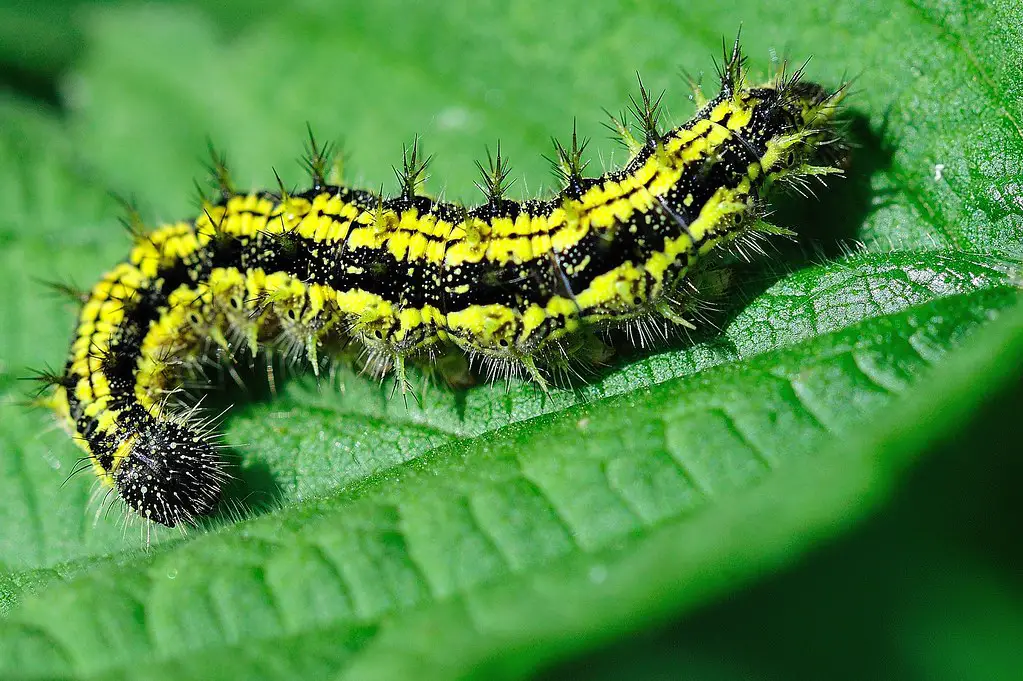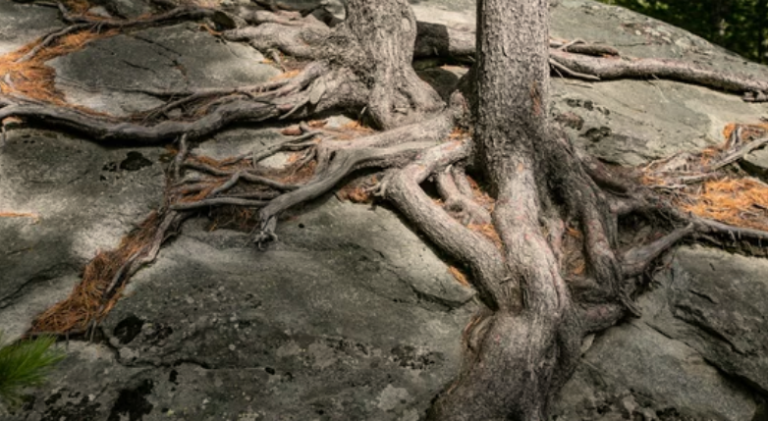Black and Yellow Fuzzy Caterpillars: From Larva to Lepidoptera
Caterpillars, those delightful little creatures that inch their way through our gardens, are the unsung heroes of metamorphosis. Among these, the black and yellow fuzzy caterpillars stand out, captivating our attention with their striking appearance. Let’s delve into the world of these vibrant larvae, exploring their colors, patterns, and fascinating transformations.

1. Black and Yellow Caterpillars
Black and yellow caterpillars come in various shapes and sizes. Some sport furry bodies, while others flaunt spines or horns. Their hues range from bold black stripes to sunny yellow fuzz. But what unites them all is their destiny—they metamorphose into spectacular winged insects.
2. The Monarch’s Stripes
The iconic monarch butterfly begins life as a black and yellow striped caterpillar. As it munches on milkweed leaves, it grows plump and vibrant. But its transformation is nothing short of magical. From its humble caterpillar form, it emerges as the resplendent orange and black monarch butterfly, gracing gardens and meadows with its regal presence.
3. The Tussock Caterpillar’s Fuzziness
Picture this: a yellow caterpillar adorned with black spines or horns. That’s the spotted tussock caterpillar. Its fuzzy coat serves as both camouflage and defense. But beware—the tufts of fine hairs can cause skin irritation. So, admire from a distance!
4. The Dagger Moth’s Fluff
The American dagger caterpillar boasts long, fluffy, yellow-white hairs and a shiny black head. Its two pairs of black-haired pencils add to its distinctive appearance. These caterpillars, measuring up to two and a half inches, transform into elegant dagger moths.
5. The Catalpa Sphinx’s Bold Markings
Yellow sides and a thick black line—meet the catalpa caterpillar. This striking creature feeds on catalpa trees, its contrasting colors making it easy to spot. As it matures, it morphs into a beautiful moth.
6. The Zebra Caterpillar’s Artistry
The zebra caterpillar lives up to its name. Its body showcases intricate black and yellow patterns, resembling a zebra’s stripes. These artistic larvae feed on various plants, preparing for their grand transformation.
7. Safety First: Poisonous or Harmless?
Most black and yellow caterpillars won’t harm you. However, the hairy spotted tussock caterpillar and the monarch caterpillar contain toxins. While they won’t bother humans, small birds and rodents should steer clear. Remember, appearances can be deceiving—those spiky horns and vivid colors are their defense mechanisms.
The Final Word
Next time you spot a black and yellow caterpillar inching along a leaf, pause and appreciate its journey. From munching on foliage to unfurling its wings, it’s a testament to nature’s artistry. So, whether you’re a gardener, a curious observer, or an aspiring lepidopterist, these fuzzy caterpillars remind us that beauty lies in every stage of life.
In the grand tapestry of existence, these little crawlers weave their threads, transforming into fluttering wonders. So, let’s celebrate the black and yellow fuzzies the unsung heroes of metamorphosis.
Frequently Asked Questions About Black and Yellow Fuzzy Caterpillars
- What are black and yellow caterpillars? Black and yellow caterpillars are the larvae of butterflies or moths. They can vary in size, have different markings, and may even sport fuzzy bodies.
- Do all black and yellow caterpillars turn into butterflies or moths? Yes, all black and yellow caterpillars undergo metamorphosis and transform into spectacular winged insects. However, their adult forms may not always resemble their caterpillar appearance.
- Which caterpillar turns into the iconic monarch butterfly? The black and yellow striped monarch caterpillar transforms into the resplendent orange and black monarch butterfly.
- What’s unique about the spotted tussock caterpillar? The spotted tussock caterpillar is yellow with black spines or horns. Its fuzzy coat serves as both camouflage and defense.
- Tell me about the American dagger caterpillar. The American dagger caterpillar boasts long, fluffy, yellow-white hairs and a shiny black head. It eventually becomes an elegant dagger moth.
- What’s the catalpa caterpillar known for? The catalpa caterpillar has yellow sides and a thick black line. It feeds on catalpa trees and transforms into a beautiful moth.
- Why do some caterpillars have spiky horns and vivid colors? These features are defense mechanisms to ward off potential predators. Most black and yellow caterpillars won’t harm humans, but some contain toxins that could affect small birds or rodents.
- How can I identify black and yellow caterpillars? Look at their colors, distinctive markings, legs, presence of hairs or spines, and size. Some caterpillar species are also associated with specific plants they feed on.
- Are black and yellow caterpillars poisonous? Most are harmless, but the hairy spotted tussock caterpillar and the monarch caterpillar contain toxins. Avoid touching any caterpillar with spines or tufts of fine hairs.
- What’s the transformation process like for these caterpillars? From munching on foliage to unfurling their wings, it’s a testament to nature’s artistry. Beauty lies in every stage of life.
- How long can black and yellow caterpillars grow? Striped and horned yellow and black caterpillars can measure from less than an inch (2.5 cm) to 5.5 inches (14 cm) long.
- What’s the significance of yellow and black coloration? Yellow and black caterpillars often rely on vivid coloring to deter predators. Poison glands are rare, but their striking appearance serves as protection.
- Which caterpillar becomes the Isabella tiger moth? The black banded woolly bear caterpillar, with black at each end and red, orange, or brown centers, transforms into the Isabella tiger moth.
- What about the Virginia tiger moth? The yellow woolly bear caterpillar, solid yellow to orange and fuzzier than the black banded woolly bear, becomes the Virginia tiger moth.
- Why do most yellow caterpillars have spikes or hairs? These features give them a furry appearance and are common among various species.
- Where can I find the Io caterpillar? The Io caterpillar, with a green body, can be found in Texas, Colorado, and parts of Canada.
- Are there any other fascinating fuzzy caterpillars? Absolutely! Explore the world of caterpillars—they’re full of surprises.
- How can I help protect caterpillars and their habitats? Create butterfly-friendly gardens, avoid pesticide use, and learn more about these incredible creatures.
- What role do caterpillars play in ecosystems? They serve as essential pollinators and contribute to the delicate balance of nature.
- Can I raise caterpillars at home? Yes! Consider raising caterpillars from eggs or larvae and witness their magical transformation firsthand.
References:








